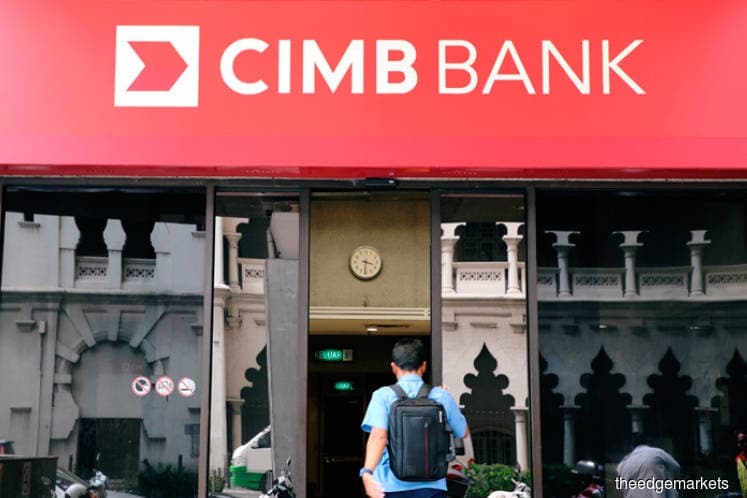
This article first appeared in The Edge Malaysia Weekly on November 25, 2019 - December 1, 2019
FROM traditionally having been CIMB Group Holdings’ second smallest contributor to revenue, commercial banking has become the financial institution’s second most profitable business segment thus far this year. To sustain the momentum, the group has undertaken a number of initiatives in the competitive small and medium enterprise (SME) sector with the latest involving entering the digital space to connect its clients directly to end consumers both locally and regionally, say sources.
The Edge understands that the group has written to Bank Negara Malaysia to seek its approval for a new venture that will involve CIMB entering the business-to-consumer (B2C) e-commerce space.
“The plan is to connect the banking group’s business clients to consumers. This will also provide CIMB’s SME clients with a platform to sell directly to foreign markets. CIMB will work with a technology provider that will help its SME clients build e-commerce platforms through which they can sell their products and services to both the local and regional markets,” says a source.
This is the latest development in CIMB’s strategy to enlarge its portfolio in the SME sector, which is getting highly competitive because more banks are vying for a share of the pie.
“Banks are offering more than traditional lending nowadays … this is a new reality for them. This is especially so because of the growing competition and changing operating landscape that banks face today,” an analyst opines.
In the past year, CIMB undertook partnerships and initiatives to expand its services to the SME sector and commit to an increased loan allocation for it. The group also announced plans to disburse RM15 billion to SMEs this year and next; it provided RM3.9 billion to Malaysian SMEs in the six months ended June 30, 2019.
Just last month, the group announced a refreshed SME business proposition to provide customers with a complete suite of solutions that go beyond banking.
The question is, will CIMB’s more aggressive move into the SME sector this year bear fruit?
Not many realise that CIMB’s commercial banking business, where the SMEs are parked, has been the second largest contributor to group earnings thus far this year. This is a first for the group as commercial banking has traditionally been a small contributor to earnings — after consumer and wholesale banking — since it was introduced as a standalone pillar in FY2015, following an internal recalibration of the group’s various businesses as part of its T18 (Target 18) reorganisation strategy.
Indeed, in the first half of the year, commercial banking was the group’s most profitable segment — registering a profit before tax of RM1 billion — and the second largest contributor to the top line — with RM1.26 billion.
The segment posted a 106% year-on-year increase in profit before tax and zakat to RM1.01 billion in 1H2019. In the nine months ended Sept 30, profit rose 102% year on year to RM1.37 billion due to lower provisions and improved non-interest income, outperforming its full-year profit of RM660.9 million in FY2018 (up 180% year on year on the back of lower provisions and costs) and RM235.9 million in FY2017.
In FY2018, the group’s Malaysian SME business saw a loan growth of 20%. It disbursed more than 4,000 new financing facilities in the year. It also grew its unsecured loans by 36%.
Nevertheless, in its entirety, CIMB saw its top and bottom lines fall in the nine months ended Sept 30. Revenue dropped 0.3% year on year to RM13.27 billion while net profit fell 18% to RM3.7 billion. Excluding a one-off gain of RM928 million from the partial sale of CIMB-Principal Asset Management and CIMB-Principal Islamic Asset Management, CIMB’s 9M2019 net profit grew 5% year on year to RM3.7 billion or an annualised return on average equity of 9.1%. Loan-loss provisions declined 9.8% to RM1.03 billion, equivalent to a loan-loss charge of 0.38%, while ratio of credit impaired financing to total financing, advances and other financing rose to 1.83% from 0.9% in December 2018.
“The group remains cautious on prospects for the rest of 2019, given the backdrop of uncertain regional and global economic conditions,” CIMB says in its notes accompanying its 3Q2019 results.
But clearly, CIMB has accelerated its activity in the commercial banking, especially SME, segment this year amid an increasingly tough business environment. Will its initiatives produce sustainable results? Only time will tell.
Save by subscribing to us for your print and/or digital copy.
P/S: The Edge is also available on Apple's AppStore and Androids' Google Play.